Are you still forking out cash every month to train at a global-gym or CrossFit box? Wouldn’t you rather be training at home? If the cost of owning your own quality equipment seems too high and out of reach, and it’s that reason alone that stops you from building out your own garage gym, I have good news: it is completely possible to build a functional, quality garage gym on a budget, and I’m going to show you how with as little as $500.
Updated January 2018 – price and link verification, checking for ways to improve selection and/or lower cost.
Garage Gym on a Budget – Table of Contents
- Intro
- Box Stores
- Gym Packages
- Bar+Bumper Packages
- Build Your Own Gym
- Best & Cheapest Budget Configurations
- Final Thoughts
Budget Garage Gym – Introduction
A strength training gym doesn’t have to include nearly as much equipment as you’re used to seeing at the commercial gyms. You don’t need row after row of pin-select stations and plate loaded isolation machines in order to make those gains. Even machine-less CrossFit boxes tend to have far more equipment than is actually necessary to work every muscle group in your body. Sure, variety is nice, and in time you’ll have it, but you need to lay the foundation first.
In this article I’ll show you how you can get set up at home with a $500 to $1000 budget. If you happen to own some equipment already, the cost should be even less. Of course you won’t have everything you want right out of the gate, and start-up gyms on a budget don’t usually make for a top-rated Pinterest board, but once you have that foundation set you can start putting those saved gym dues towards improving your own gym rather than paying the rent for someone else’s, and that is something that you can definitely be proud of.
So first I’m going to discuss two types of gym packages that may save you some money – full equipment packages and then bar + bumper packages. Since I am not really convinced that gym packages are the ideal solution on such a strict budget, I will then discuss multiple pieces of equipment that are needed to start your gym, and give a few examples of what to look for when trying to find these items for yourself.
Just so you are aware, I never recommend anything that I know to be or even suspect to be junk, and I certainly never recommend anything I wouldn’t feel confident enough to use for myself. If the gear I talk about is still too expensive for you, you may be better off sticking with the gym membership until you have some money saved up. Going much cheaper than this is questionable at best, and I’d rather you got a quality workout at the Gold’s Gym than a shitty or even dangerous workout at home.
Box Stores and Mega-Fitness Outlets
Don’t buy your barbell and power rack down at the local sporting goods store. That stuff is almost always complete and utter garbage. Anyone who tells you that their $200 Dick’s or Sears power rack is just as functional as a Rogue power rack has absolutely no idea what they are talking about. If your neighbor tells you that his $90 Body Solid barbell will get the job done just as well as a $300 Ohio Bar or American Barbell California Bar, he is obviously not loading any weight on that $90 bar.
I could dedicate thousands of words to the differences between a $300 and a $600 power rack, or the difference between a $100 barbell and a $300 barbell – and maybe some day I will. For now, suffice it to say that when it comes to strength training, sporting good stores are the Wal-Mart of the fitness world. Box-store lifting equipment is for impulse buyers, not serious lifters; it simply won’t last. Even if you don’t break box-store gear, you will ultimately replace it out of necessity, and that makes it a waste of money all the same.
I get enough feedback from people to know that some of you will still buy your equipment right there next to the Home Depot and Bed Bath & Beyond. I genuinely hope that whatever these folks buy serves their purposes and lasts as long as they need it to. There is nothing worse than having the motivation and willingness to put the time and effort into training only to have your gear hold you back. Progress is worth a hell of a lot more than a few bucks.
Retailer Packages for Garage Gyms
Many strength training retailers like Rogue and Vulcan offer pre-assembled garage gym & CrossFit packages. These packages come in all shapes and sizes, are often customizable, and can sometimes be a great way to start a new gym. That being said, they can also be a horrible way to start a gym; especially when you’re trying to make the best of limited funds.
The fact is that there are not very many packages out there for under a $grand (much less $500) that will be all that helpful for a start-up gym unless you strictly CrossFit. Still, it never hurts to look around and see what’s available. Here are two things you should keep in mind when considering packages though:
- Do not just assume that a gym package is cheaper than buying everything individually. Usually the only significant savings come in the form of discounted bulk shipping, not a discount on the products themselves.
- If the package contains any items that you don’t want or need, it’s not a good package. Each and every included item that won’t get used negates the savings you might have gotten by buying the package in the first place.
Number two is why I am not overly confident that a package is the way to go when budget is a factor. Accessories like gymnastic rings and plyometric boxes are fine and all but they are small potatoes when compared to bumper plates, a decent barbell, racks, and so forth. When starting from scratch it’s more important to get these core, generally more expensive pieces than it is to have an AbMat and a selection of kettlebells. Add your plyo jumps and ring dips a few paychecks down the road. For now, make sure you can lift.
To give you an idea of what most equipment packages are like, pictured above is the Alpha Package from Rogue. It contains an Ohio Bar, spring collars, and 320-pounds of bumpers; all of which are perfect for a start up gym (320-pounds is a very generous amount of weight to start out with.) However, this package also contains an Ab Mat, gymnastic rings, climbing rope, medicine ball, four kettlebells, a jump rope, and the whole package sells for $1500!
That’s a boatload of cash to drop and not even have a squat stand, pull-up bar or a bench. I’m not saying it’s a bad deal, but it certainly isn’t helpful when you’ve got at most a grand to spend and you want to do more than a CrossFit WOD.
Bar + Bumper Packages
The other type of package out there are Bar+Bumper packages. These are more common among retailers, and in my opinion usually a better buy. They allow you to potentially save a few bucks on these core components that you would buy anyway while also allowing you to price shop for your rack, bench, and other high priority pieces. You can find some economy packages that start as low as $450, premium packages that can set you back the cost of a used Kia, and anything in between.
The downside? Just like equipment packages, they aren’t usually that much of a deal, and sometimes they aren’t a deal at all! You’ll almost always get free shipping on a package, but the price of the equipment may be no different than piecing it out. Also, you will be forced to get your bar and bumpers from the same retailer. Maybe you want Brand X’s bar and Brand Y’s bumpers. Well there is no package like that!
Of course, there is always the chance that a particular bar+bumper package is a deal and exactly the bar and bumpers that you want. Again, there is no harm in looking. Vulcan is my recommendation when it comes to both equipment packages and bar+bumper packages as they allow for the most customization and offer the biggest price breaks.
Well-Equipped Budget Garage Gym for Under a Grand
In order to have enough equipment at home to leave the global gym behind, you should be looking to get your hands on the following core pieces:
- 20 kg or 45-pound Olympic bar
- Olympic weights or bumper plates
- Olympic bar collars
- Squat stand or power rack
- Flat utility bench
- Pull-up / chin bar
With these pieces you can train every major lift and leave no muscle group behind. You can squat, bench, OH press, deadlift, good morning, row, power clean, jerk, snatch, pull-up, and nearly any variation of these movements. In other words, unless you just go to the gym to creep around or ride the treadmill, there is no reason you couldn’t cancel your gym contract and hit it hard at home.
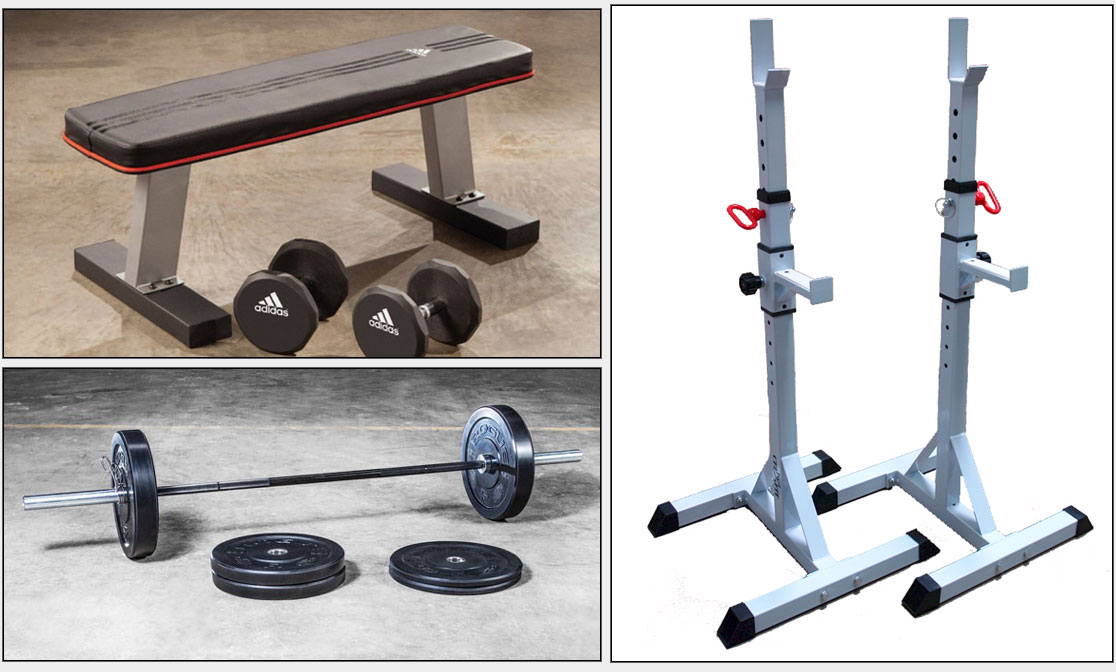
I’ll be giving some examples of affordable, reliable, and safe options for each of the pieces I mentioned. These suggestions are perfectly viable options but they are not the only options. My goal is to give you enough information about each piece of equipment so that you know what to look for yourself in terms of quality, features, etc. You’ll still want to do some of your own research, of course.
You can learn even more about each piece by looking at my equipment guides which you can find on the top menu bar on this or any page of this site.
Note: Shipping prices are not included in this article. Lots of stuff ships free, some can be locally picked up, and even the stuff that must be shipped will vary in price depending on your location. It was easier to leave shipping out of completely.
Squat Stands/Racks
Trying to buy a decent sized power rack will kill your budget unless you already have a bar and plates. I suggest holding off on buying a full-size rack until you can afford to do it right, and just use squat stands in the meantime. It’s really not worth it to buy some rickety piece of crap power rack with a few hundred pound max rating just for the sake of saying you own a power rack; you’ll regret it down the road.
Here are a couple of affordable alternatives:
Squat Rack Option 1: CFF Gen2 Squat Stand
The CFF Gen2 Squat Stand (the white stands pictured above a few clicks) is made with 11-gauge steel rather than the more commonly used and weaker 14-gauge steel that is typical of economy stands, and it has a much higher load rating because of this (750-pounds.) The Gen2 also has the added benefit of short safety spotter arms that allow you to perform strict bench presses without needing a full rack.
This product is strong and inexpensive and it should serve you well for some time while you save for a real power rack. You can read reviews and buy these stands on Amazon, but I’ve noticed the price fluctuates a bit from about $175-$200. No idea why!
Squat Rack Option 2: Vulcan H-Basic Squat Stand
Vulcan stands are a little pricier than the CFF stands from above, and it may simply be too much to pay and not get a pull-up bar included, but it is a more secure option for those who prefer a one-piece unit rather than independent stands so I’ve included it anyway
The Vulcan H-Basic is built with industry standard 2″x3″ 11-gauge steel and can hold up to 1000-lbs. It has UHMW lined J-cups that keep your bar looking nice. As I just mentioned, these stands also have the benefit of being one piece which makes it much more secure.
The downside is that there are no included safety spotters. However, because of the steel used it would be easy to add spotters down the road. You’d want to make sure the spotters don’t stick out further than the feet of the unit as it’s dangerous to set the bar down outside the footprint of the rack (incidently, that’s why the spotters on independent squat stands are so short.) $325 with free shipping.
Squat Rack Option 3: Rogue S-2
This will probably tear up your budget if you’re not saving money somewhere else, but it’s worth every penny if you can afford to work it in. The Rogue S-2 Squat Stand is a popular, economical, full-size squat stand that is far more secure than independent stands. It has an 11-gauge 2″x3″ steel frame, Westside hole spacing for benching, and can handle over 1000 pounds. It’s nearly 8′ tall, has plastic coated J-cups, two pull-up bar options (eliminating the need for an alternative pull-up bar), and can handle accessories (aka spotter arms).
Affordable Multi-Purpose Barbells
One of the biggest issues with a new garage gym can be finding the right barbell at the right price. Depending on your goals and budget, getting exactly what you want may not even be possible. After all, a great bar can cost as much as a power rack. Thankfully, it is possible to find a decent bar with a much more “budget-friendly” price.
Remember that the idea is to find something affordable to get you started at home while not being so cheap that you can’t or won’t use it. Seriously, you can only be so thrifty with a bar before your “saving money” becomes “wasting money.” Also, assuming that you continue to train, you will eventually replace your economy bar down the road. That doesn’t mean that your economy bar becomes useless though; there is definitely pros to having multiple bars. My point is to buy something that will last.
Bar Option x: Rogue Beater Bar
The Rogue Beater has been discontinued and more or less replaced by the…
Bar Option 1: Rogue Echo Bar 2.0
The Rogue Echo 2 is currently Rogue’s least expensive barbell at $195. It is essentially the Rogue Bar 2.0 without dual marks that’s finished entirely in bright zinc, but for $60 less. So why is it $60 less? Because you get no real warranty rather than the usual lifetime warranty.
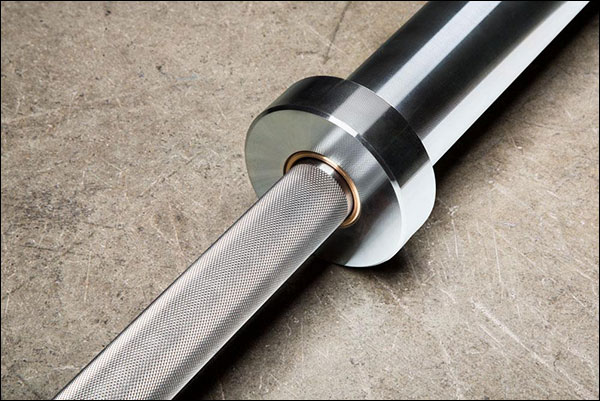
The Echo is a good starter bar. You really are getting the same hardware as a Rogue Bar or Ohio Bar for less cash, though there is just some risk involved due to the poor coverage. 1-year isn’t really any worse than buying a CAP bar like the one below, but the difference is that the CAP is much cheaper to buy.
I wouldn’t worry about it too much though. Either the bar is defective and you’ll know pretty soon, or it’s fine and it’ll last just as long as it’s more expensive big brothers.
Bar Option 2: CAP OB-86-B
The CAP OB-86B is the only bar I can think of for less cash than the Echo Bar that I would even consider lifting remotely heavy on. Even though the name implies that it’s an Olympic Bar (the ‘OB’ in OB-86B), it’s really more of a power bar. It has bushings and a 28.5 mm shaft, super aggressive knurling, and it only has IPF powerlifting marks (no Olympic marks.) This bar makes for a decent power bar, but I think that I’d find a way to spend a little more cash if Olympic lifting and/or CrossFit is part of your training.

Personally I’m not a huge fan of CAP products, but if you have almost no money to spend on a bar, this might be your best option. Hell, it’s only $135. It’s not great, but people have made gains on a lot worse.
Note: this is an Amazon product, so the price fluctuates. It’s closer to $160 lately, making the Echo even more appealing by comparison.
Bar Option 3: AB Grizzly Power Bar
The American Barbell Grizzly Power Bar is a more expensive option than the OB-86 or the Echo, but it’s a better bar than both of them. The Grizzly is a composite bushing power bar with a high tensile strength rating (190,000 PSI), moderate knurling, and a great finish for an economy bar (all hard chrome). The AB Grizzly sells for about $250, which makes it the best priced, rust-proof power bar on the market.
American Barbell has probably the best-built bars in the USA. While $250 eats up a bit of a low budget, even at this price point you’d have a bar that would last your lifetime and would only need to be replaced as a matter of preference, not necessity.
Bar Option 4: Vulcan One Basic
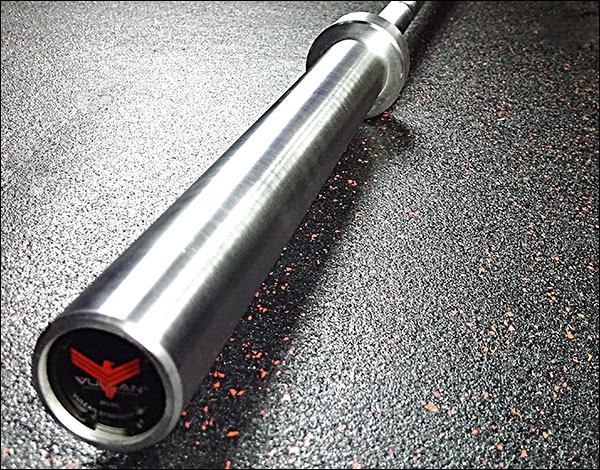
The Vulcan One Basic is a very nicely priced bar for the specifications. For $249, the One has a hard chrome finish from sleeve to sleeve, a 190,000 PSI 28 mm shaft, self-lubricating bronze bushings, dual marks, and middle-of-the-road knurl (not too harsh, yet not too soft.) This bar is comparable to more expensive bars like the Ohio and the California, and even superior in many ways.
I cannot fully express to you how much better the One Basic is than both the Echo and the CAP for such a minor price increase. Everything about the One Basic is superior to the both of them – warranty, finish, quality of the bushings, and so on. Women can save even more money, as the 15 kg One Basic is only $219.
For CrossFit and/or weightlifting on a budget, this is the bar. The CAP and the Grizzly are power bars, and not ideal for those jerks and snatches.
Weights / Bumper Plates
If you strictly power lift (no CrossFit, no Olympic lifting) then you can get away with any kind of plates, including steel/cast iron. If that is the case, you’re in luck because there is a really good chance that you can find steel plates used on Craigslist for 0.50 cents on the dollar or less. You wouldn’t believe how many people impulse buy weight sets then end up ditching it for half of what they paid. If you cannot find them used and you’re forced to buy new, check out my guide on buying new steel plates.
If you do plan to CrossFit and/or Olympic lift, then you’ll definitely need bumper plates. The likelihood of finding them used is much slimmer, but it’s still possible. I do suggest avoiding the box-store brands should you stumble upon them used though, that is unless they’re just stupid cheap. Just think; if Rage and CAP bumpers are bad when brand new, imagine what they’re like with some miles on them already.
Plates Option 1: Rogue Echo Black Bumper Plates
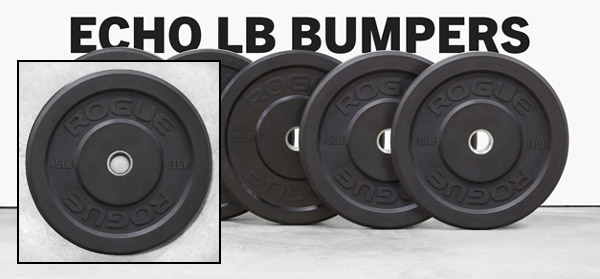
Rogue’s Echo Black Bumper Plates are the most affordable, quality plates on the market; so long as you’re not looking for a large set. If you’re completely new to lifting weights you may get by with only the small, 160-pound set. If you’re a veteran lifter already, you’ll need more weight, in which case you may want to look at the larger sets of something like maybe the Vulcan plates below. Regardless of which brand you end up with, they are both great bumpers that will last a lifetime. 160-pound set is $245.
Plates Option 2: Vulcan Black Bumper Plates
 Vulcan Basic Bumpers are priced competitively with all the big brands, and they are actually thinner than most other brands when it comes to the 25-lb + plates. You can usually get free shipping on these, and the best part is that these bumpers are far more durable than almost any other brand due to a handful of design innovations like an anchored insert and a more resilient rubber compound. 160-pound set is $269.
Vulcan Basic Bumpers are priced competitively with all the big brands, and they are actually thinner than most other brands when it comes to the 25-lb + plates. You can usually get free shipping on these, and the best part is that these bumpers are far more durable than almost any other brand due to a handful of design innovations like an anchored insert and a more resilient rubber compound. 160-pound set is $269. Plates Option 3 – Last Resort: Steel Plate Packages
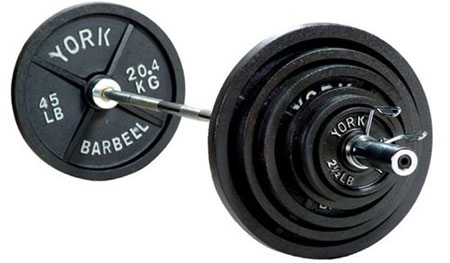
If for some reason you can’t find used steel, it is possible to find some half-decent deals on steel plates in the form of box-store bar+bumper packages (Sears, Dick’s, etc.) You’ll get a lot of weight for the money (when compared to bumpers), but the problem is that the bars in these packages are always garbage, which means that you’d basically be buying a bar that will be of no use to you.
Having said that, you could use that garbage bar as your dedicated landmine bar to spare your real bar from the eventual damage of sticking it in a landmine, or maybe you could just Craigslist the bar. Really though, I’d look for used plates first. Of course, this is all assuming that you think that you’d even be content with steel versus bumpers.
Utility Bench
There’s a bunch of cheap benches out there on Amazon and the outlet stores, but the one I’m going to show you is the only one I like this far south of the normal ~$150+ price tag. If you have extra money in your budget and want something a little beefier, take a look at the Rogue Utility Bench.
Adidas Flat Utility Bench
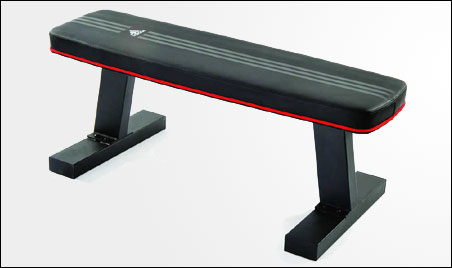
The Adidas Flat Utility Bench has a 600-pound capacity, 2½” foam padding, and measures 44″ x 19″ x 17″. This is a very popular econo bench, and the weight capacity is more than enough for even a strong man’s bench press. This bench has a lot of positive feedback and I see it all over the place. It’s ugly as hell and could be a couple inches longer, but whatever ~$80
BTW this bench comes and goes a lot. If it’s out of stock, look at this bench guide for more ideas.
Pull-Up/Chin-Up Bar
You have a couple options for a pull-up bar. Of course, the easiest solution is if your budget allows you to buy a squat stand like the Rogue S-2 from above; this way you have the pull-up bar built into the rack.
The second best option is to buy a dedicated wall or ceiling-mounted pull-up bar. There are some very nice ones out there for right around $100 or so. When installed correctly, these bars are solid and secure and you’ll be able to do chin ups, hang gymnastic rings, and even kip. I’ll show you one of the better models below.

Pull-up/Chin-up bars – Either DIY or buy.
The last option is to DIY your own pull-up bar. This can be done for about $40 (there are tons of guides available online.) If you’re really lucky, you’ve already got a pull-up solution of some sort; maybe exposed rafters, gymnastic rings, a doorway pull-up bar, a large tree, whatever. However you do it, don’t skip out on the pulls/chins.
Btw, there are some pretty cheap/shitty wall-mount pull-up bars out there. Be very careful trying to be overly thrifty here. I’ve heard some horror stories about some, especially the doorway bars. I’ve never heard of anyone being hospitalized or anything, but the damage these things do to drywall and door frames costs a hell of a lot more to fix than the couple bucks saved on the unit itself (which incidentally is also trash after it comes down.)
Rogue P5-V Wall/Ceiling Mounted Pull-Up Bar
The P5-V Pull-Up Bar is probably the best priced, quality pull-up bar around (shown above.) Most of the others out there are 14-gauge steel tubing rather than 11-gauge like this one, and they’re also usually more expensive. The P5-V can be mounted to the ceiling or the wall, and the bar can be placed either 14″ or 22″ from the mounting point. This station is a good deal and is arguably more secure than the others as it takes eight lag bolts to install rather than the normal four. Made in the USA: $120
Best Configuration for a Grand
Using the gear I’ve highlighted, this is your best-case scenario for $1000.
- S-2 Squat Stand $425
- CAP OB-86B $160
- Vulcan Bumpers 160-pounds $269
- Adidas bench $80
- TOTAL: $934
You have over $60 left to buy some decent collars. Downside? no spotter arms in this price. For a couple hundred more you could add those spotter arms and upgrade the CAP to the American Barbell or Vulcan Bar. If you did, 100% of your starter gym would go the long haul and not ever need to be replaced, only expanded upon.
Cheapest Configuration
- CFF Squat Stands $150
- CAP Bar $160
- Used Steel Plates approx 260 pounds $125
- Adidas bench $85
- DIY Chin Bar $40
- TOTAL: $530
Downside: You’d replace some of this set-up over time, but for so little money you cannot really complain. The good news is that most of this stuff would sell again used for about 70 or 80% of what you paid for it, so it’s kind of like a very inexpensive lease; certainly less than the $40-80 a month people pay to use the Gold’s or Lifetime. Of course, if you frequent Planet Fitness, nothing is cheaper than that membership, but I won’t go there.
“Yeah, but I don’t have …”
I know! I said that you wouldn’t have everything at first, but you have enough to start. Next paycheck or two, add some change plates, or stall mats, plyo box, or adjustable dumbbells, or EZ bar, or whatever it is that you need for your training.
Some Final Thoughts
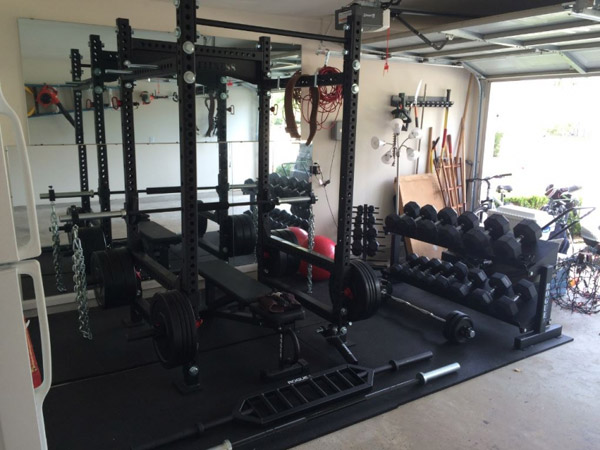
We all want to walk out into our garage and find a king-size power rack, a thousand pounds of bumpers, multiple bars, a fully loaded dumbbell rack, professional flooring, and so forth.
Well not only does that not happen overnight, but it’s actually unnecessary. You can raise your squat just as fast with your S-2 squat stand, $200 bar, and steel plates as a guy with a $4000 power rack, competition plates, and a $1000 Olympic bar. Yeah we want nice things, but in the fitness world, functional is functional. Anything outside of that is just bells and whistles, and bells and whistles are not what makes you stronger.
So don’t let the image of other people’s home and garage gyms make you feel like your gym isn’t good enough to get the job done. The folks with super fancy garage gyms have spent years building those gyms, updating equipment, adding accessories, and so forth. It takes time, but you’ll get there. Shop smart, just don’t be too cheap. Safety trumps savings.
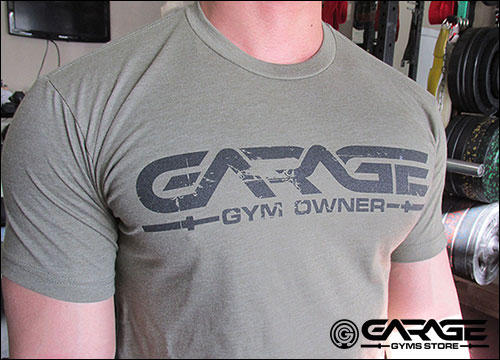

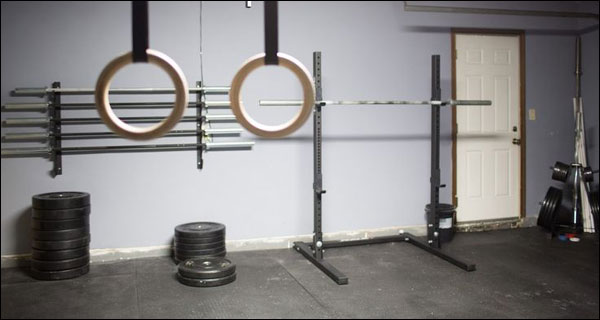
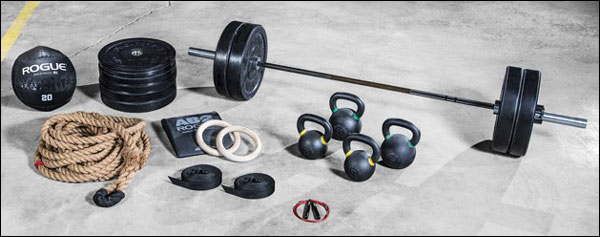
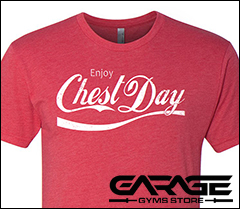
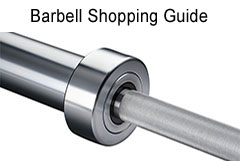
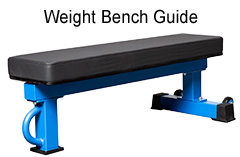
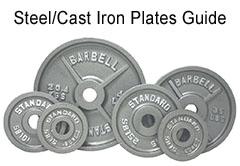
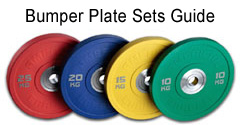
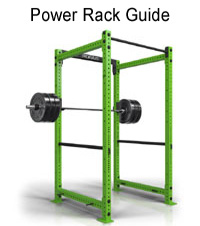
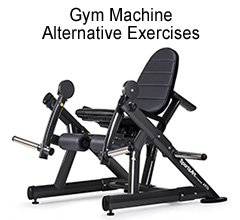

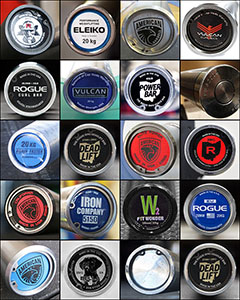

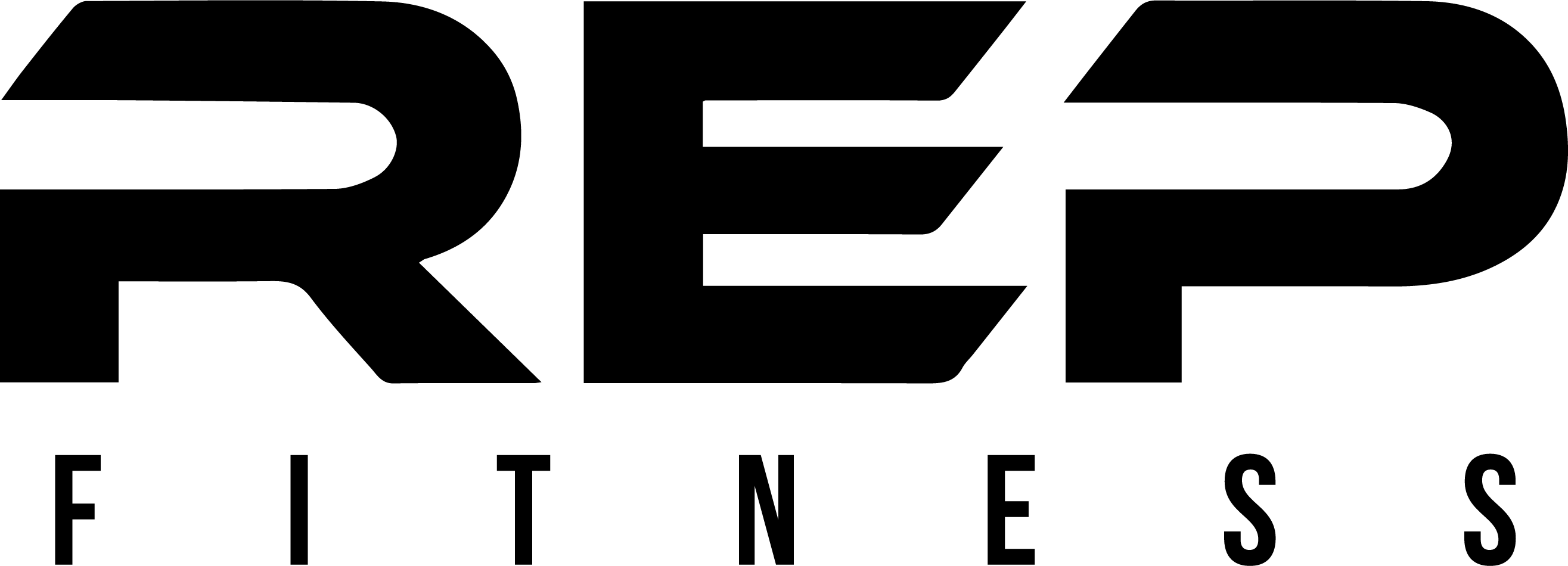
That really strikes me as a good budget guide. I know it complicates things to always give the next step or two up but when you can work it it adds a lot of practicality.
Here’s something to think about as to budgetary issues: I was paying something a bit over $100 after years of tenure at the gym I used to use so that was a lot cheaper than if you’re a new client at most places. The time to make the trip over there got way longer over the years and the quality of the clientele was on a long depressing slide — finally they closed for about 3 months and wouldn’t prorate my fee so I made the break. I started by buying a recumbent stationary bike for home – the best sort of cardio unit in consideration of my various injuries. I’m trying to make the gym fit nicely in a single garage with a highish ceiling that’s one of 4 interconnected garages — these garages are worth roughly $250-300/month each…so I’m trying hard to make it useful for storing a car as well as part of my shop stuff. I guess if I can make it that flexible, I could estimate how much the gym space is costing me by adding up the floor space it uses when it’s put away. But the garage itself is obviously way more expensive than the gym fee was. Of course there are some small transportation savings…the time being worth more than gas and wear on the car — guess I might save about 250 hours of travel a year there with no adjustment for time spent in setting up the home gym; that many hours can add up if you value your time…have to say that was compelling when I looked at it that way. So depending on a person’s estimated hourly earnings, if the cash flow can be swung, it may make a lot of sense to get better equipment early and not replace much of anything later because a lot of those expenses can sort of vanish in light of the value of the potential saved time from avoiding the gym. But as in my case, the cost of the home gym space can be worth considering.
Yeah honestly it rarely occurs to me that some folks rent their garages. Back when I rented, I never even considered owning my own gym. The last gym I was a member of was Lifetime, and even with a grandfathered rate, I still paid around $70 a month. Even with spending closer to $2000 on my start-up, I have more than paid for my gym in unspent dues at this point. Obviously I’ve added things, but the benefits of not having to go to someone else’s gym are actually worth more money to me which works out well since it really costs me less money. Plus, there are two of us, and we were both at Lifetime, so the savings are pretty huge at this point not even taking into account gas and time.
Well, we’re not actually able to rent any garages out here because they’re too loaded with all our stuff, but garages do rent for about that much around here, I do have to park the cars somewhere (and leaving them outside makes for more maintenance work and exterior clutter), plus it makes the apartments that we do rent out less valuable because tenants have to park on the street where it’s often hard to find a spot. Hopefully we’ll eventually get to the point where we can free at least a couple garages for tenants — at one point a goal was to free four in the back of the building for that while continuing to use those four tall ones in the front for our uses but it’s not worked out that way so far.
People have a lot of different situations so that the costs come out differently. I notice that I didn’t write it very clearly but I was paying something over $100 a YEAR so the fees really paled in comparison to the rest. And people have different potential time savings and different dollar rates they might assign to their time — but I guess my main point is that when people are making the transition to home that’s it’s a good idea to look at the total financial picture and think about doing what it takes, if possible, to buy things that do not require replacing because in the long run that actually costs more, and the savings of being at home might be higher than they appear at first glance. If it’s 250/hours a year savings that would add up even at minimum wage, so I’m thinking that calculation might be meaningful even to a fair percentage of the folks who’d be applying your minimum-budget transition guide.
To be fair, I personally wouldn’t buy lower-end gear; even the stuff slightly better than the box-store crap. I think that’s probably mostly obvious based on the rest of the site here, but I do get asked a lot about the cheap stuff, and I know some people just want something to get going. I actually have a hard time doing these kinds of articles because I really want to see people buy mid-range or better even for a start-up, but not everyone is going to do that, so hopefully I’ve at least saved them from the box-store junk.
Yeah, I think people just need to see the difference in quality for themselves to be sold. I basically went for the cheapest option to start and I’ve already decided to upgrade several components of my gym after only a few months. I did, however, find some great deals on craigslist. Getting my foot in the door cheap allowed me to prove to myself that I was actually going to get great workouts in at home and that I could be consistent. As soon as that happened, it was much easier to justify the cost of higher quality equipment.
In the interest of starting out on a tight budget, there’s a DVD out by a guy who shows how to set up a cable/bar setup — I think I got it from Atomic Athletic. Cables run from the bar to loading pins on the floor (in the starting position) so the weights never get that far off the floor; you can do a lot this way without a rack or squat stand, and it looks safer to me than a squat stand.
Lately, Spud has developed something like that using their characteristic yellow nylon straps — they announced a naming contest for it in the last week or so, so one of your readers might save more there if they win the contest (not sure what the prize is if any but I’d suspect it might involve that gear).
Yeah Rogue sells Spuds pulley system. I’ve thought about picking one up and seeing how it is. It would be a pretty inexpensive review which is always appealing to me; plus I’m sure I’d use it. I don’t really need to be doing lat pulldowns, but tricep work could be nice. Last time I checked it was out of stock though.
if there’s a way to attach pics I could shows your how I copied the spud pulley setup for about $50…go to tractor supply buy some pulleys, cable, and cable locks -go to home depot and buy a floor flange and about 1ft of threaded 1″ pipe- and finally off of amazon there’s multiple companies that make atv tie-down straps, pick some of those up for connecting it to your rack and then also I use them for the handles for tricep extensions and whatnot…
Hi J,
Thanks for the great reviews you’ve put up on this site! I’m in the market to buy a 260lb black plate set & a barbell but I’ve got a few questions I’m hoping you can help me with.
I’ve just about decided on the OFW 260lb plate set for $405. I was keen on the Vulcan set instead since it’s $25 cheaper, but it seems to be out of stock till next month and I’m wanting to make the purchase tomorrow. Do you think the OFW is worth paying the $25 higher price for over the Rogue echo set?
I’d like to keep cost down as much as possible, so which of these bars would you recommend? The Vulcan One, Vulcan Standard, Rogue bar 2.0, & Bomba V2.
What is the difference between the Vulcan One & Standard bars? Other than the latter being made in USA, I’m not sure what else is there to justify the additional $45 that the Standard would cost. I’m leaning towards the Bomba v2 just to stick with the same vendor, but if you’re positive that for $240 one of the other bars a much better option, I can go for that instead.
Thanks in advance for your help!
Hi Zan, so the OFW set has a couple advantages, but whether or not they’re worth the $25 is up to you. The biggest difference is the durability of the 10’s and 15’s. I have four pairs of 10’s from various manufacturers and the OFW are both one of the oldest pairs, and the only pair with no warping. Granted, if you have no intention of dropping the bar without also having bigger plates loaded, it shouldn’t be an issue. The other advantage is that the 25+ OFW plates are much narrower. Technically it allows you to get more on the bar, but again, not usually an issue.
The Standard is the best “economy” bar that Vulcan sells. It has the tightest construction (no lateral play in the sleeves), the highest quality finish, and in my opinion has the best knurl out of the One and Bomba. The Standard is really just a more refined One, and it should last forever. The Bomba V2 isn’t bad, but it’s not on the same level as the Standard. It would be a reasonable substitute for the One though, and it has the advantage of not being 100% black zinc. The Rogue Bar is fine as well, but that’ll cost you as much as the Standard, and I’d rather have the Standard myself. They’re all in the same category though – multi-purpose, do anything bars. So they’ll bench, squat, clean, snatch, etc well enough.
With FS, you’ll get free shipping if you buy everything from them. They also have the benefit of a whole year to return it. The other bars have warranties, but I think the idea with FS is that it’s basically a hassle-free return. It’s the only place that for a year you can just decide you don’t want it anymore and send it back.
That help any?
It sure does, thanks! I’ll stick to the OFW plate set. Based on your feedback I’m still torn between the Bomba V2 & Vulcan Standard, but I’ll probably end up going for the Bomba to save on $$ & to stick with the same vendor.
Couple of follow-up questions…
If a woman is strong enough to use a 20kg bar, is there any reason she should use a 15kg bar instead? I ask because my wife & I want to work out together, and we want to avoid having to buy a second bar unless there’s a really compelling reason she shouldn’t use the 20kg one.
Lastly, I’ll be using this equipment on the bare concrete floor in our garage; it will probably be a few months before we look into viable flooring options. Will the bar & plates be able to hold up to the abuse of being dropped occasionally onto the concrete floor? I don’t plan to drop anything from overhead or shoulder heights, only hip height. What do you think?
The women’s bar is all about the shaft diameter. It’s just meant for smaller hands (25 mm vs 28+ mm). The weight is irrelevant other than for warm-up work with the bar alone, but even then it’s negligible. So unless she has a problem with a 28-28.5 mm shaft, there is no other reason to own a second bar exclusively for her. Having said that, 3 mm doesn’t sound like a lot, but it feels completely different. Women love their 25 mm bars over men’s bars.
The floor and equipment will be fine for a while if you keep the drops low since you’ll be using bumpers. I’d still probably at least consider getting some stall mats from Tractor Supply. They’re only $40 each for 4’x8′ mats, and two of them side by side is a nice sized area to drop weights. Stall mats are just as good as professional flooring in terms of durability and protection. In many, if not most cases, stall mats are actually better than commercial flooring as stall mats are 3/4″ thick and flooring is normally 3/8″ thick. CrossFit boxes usually line the entire gym with stall mats because of how cheap it is in comparison to commercial flooring.
Rogue released their Echo bar for $195+ shipping. That bar plus echo bumpers, along with their echo rack, would make a good combo.
Rogue Echo Bar— $195+14 shipping/handling
Rogue Echo Bumpers (230 lb set)-$325
Rogue ES1 squat rack- $275
Adidas or Marcy Flat Bench-$85, or get this at a used sporting goods store for less, just check it to make sure it can handle 500+ lbs).
Pull up bar- DIY
Iron Change weights-$60 (45, 10, 5, 2.5)-craigslist or used sporting goods store price
Spring Collars- $8
Allowance for shipping- $40
About $1000 for good quality equipment (and 400lbs of weight) The bench can be used as a plyobox. There are no spotter arms so do not clip your bar during bench.
Now for additions
20 lb medball from Title Boxing- $50
Rings from Walmart or Amazon (plastic) $30
Wood for Plyobox (DIY)-$60
Speed rope-$15
Adjustible dumbells- $50 or less (used-CL or sporting goods store)
Stall Mat- (4’x6’x3/4″, cut in half) $40
This comes to about $1200-1300 total, and you have a complete econ home gym that allows you to do 80% of the movements found in CF. And the bar and bumpers are not junk!.
I actually built my power rack out of 4X4’s and it is a BEAST! The total cost was $200 but thats after I added a pull up bar, paint, and stenciled numbers for each safety bar hole. Here is a great guide on youtube: https://www.youtube.com/watch?v=6dy5eyMDt3c
Any advice on shorty barbells on a budget? I convinced my pops to start lifting and space is a concern. The Rogue C-70 is a bit pricey. Other options I’m seeing are York, Troy and Body Solid varieties in 5′-6′ versions.
Yeah C-70 is the best but York should still hold up for a while. If he’s a new lifter, the performance difference between a Rogue and York isn’t going to matter much anytime soon. I can’t imagine Body Solid’s short bars are any better than their standard bars, but I don’t actually have an experience with them so I don’t want to outright say that they suck.
Sweet thanks. Merry Christmas!
Yeah the Body Solid bars are so cheap but clearly fall under the “chinese junk bar hex bolt” category. Do you know if the York’s “hard chrome” is real hard chrome and not the flaky stuff? I’m referring to the York Strength Training bars on the Rogue site. They have black oxide too for the same price, which is why I’m skeptical it’s really “hard chrome” on the shaft.
Merry Christmas! I don’t think it’s technically industrial hard chrome, but it’s also not that spray on, flake off stuff you’d find on a $89 bar at Dick’s. It’s probably just a normal chrome dip like what Rogue puts on the sleeves of their bars (well the ones with chrome sleeves, of course).
Hello,
After reading this article, I’m seriously thinking about getting the configuration for a grand, with a few of the upgrades as recommended. One question I have is, which is better, the S2 Squat Stand or the SML-2 ROGUE 90″ MONSTER LITE SQUAT STAND?
Secondly, do you know whether this has
At only $20 more, technically the SML is a better, beefier unit. However, both units are more than good enough, and keep in mind that accessories for the SML will cost more than accessories for the Infinity (S-2).
Second part of that question seems to be missing.
Guys, if you choose the S2 Squat Stand from Rogue, you won’t be disappointed! I’ve had it for 1 year and this squat is a monster. Strong, durable and safe. Check out my video for more information!
https://youtu.be/lHwZMnJZbkw
Hey looking to start my first set up, and was all ready to buy a SS Ohio Bar but checking out closeouts on Rogue found the boneyard bars. Wondering on your thoughts, cause some don’t last very long and the are so CHEAP. Looking at the boneyard Echo Bar. Definitely researched for awhile, but in the interests of getting thinggs started, I might pull the trigger tonight. Thoughts?
Hey Andrew. Boneyard is a risk. It’s not a huge risk, but it’s a risk since they don’t (and won’t) tell you what’s wrong with any given bar. Could be cosmetic scratches which is no big deal, or could be jacked knurl where you’ll want to position your hands. I’ve gotten lots of feedback on Boneyard bars, and I’d say it’s about 75% pleased, 25% regrets. I personally wouldn’t do it, but odds are in your favor. If you can’t afford the miss though, buy a new bar.
The upgrade from Echo to SS Ohio is worth it if you go with new, but I wouldn’t upgrade the Echo to a non stainless Ohio. That is to say, the Echo is a better deal than regular zinc Ohios, but the SS is worth the price hike.
Great, for sure, and thanks for the super quick response. My thoughts are I want to spend as much money on weights as possible, while still buying quality product. If I went with the SS Ohio I could prob only get about the 230lb Vulcan Basic Bumpers, but if I save enough on the bar I was hoping to at least get the 280lb set to maybe even step into the 300lb category. Been reading your site for awhile, and taking a que from you, I really don’t want to limit my potential by the amount of weight I have on hand
I hear ya. How much weight you need at this moment will dictate what you need to buy now. Remember weight can be added to your collection at any time. If you regret a bar purchase, you have to buy a whole new bar again. If you’ll be content with the Echo, go for it. It’s not as though it won’t serve its purpose.
Also I was only commenting on the SS Ohio since you mentioned that it was initially on your radar. I was basically confirming that it was a worthwhile purchase. Oh and don’t forget to save a couple bucks for 2.5 and 5 pound plates. V-Locks are my recommendation; they last forever.
Alright, thx, I think I’m gonna holdout for the SS Ohio then. Your comment about the boneyard bars was very helpful, the comment section on Rogue doesn’t reflect what you said, but it makes sense.
Keep in mind that people are probably slightly more inclined to tell me about their experience if they had a problem or are unhappy. What do you mean exactly by comment section? Reviews aren’t allowed on Boneyard bars.
Most of the things that can be wrong with a bar are cosmetic, and non-issues. The reason I personally don’t risk it with Boneyard (or B-side, or any other seconds bars) is because I would be disappointed to receive one with knurl issues.
Right, and I get that. They definitely used to have a comment section but I guess they got rid of it. That’s where I read some five star reviews of people getting almost perfect SS Ohio Bars with only slight knurling imperfections where the commenters didn’t even grab the bars. So it really interested me, but then I saw how it was only a $50 price difference, and with taxes and shipping included I figured I might as well get the real thing.
I’ve just been getting impatient, and really want to get my hands on something. Those Echo bars on closeout come out to less than $200 with all the extra costs on top of the bar. I don’t really have the money to get another bar though if the boneyard didn’t work out, and if I was to get another one I’d really like to step up to a true Oly Bar prob in a few years. I’m pretty much just shooting for an SS Ohio and prob 230lb of the Basic Vulcans. Just got itchy fingers and thinking about knurl defects it would prob bug me in the long run, which is how long I’d want to have this thing. Thanks for the input, and talking me off the ledge
great article, im trying to piece together a home gym for under $1500 and I found this article very useful. However I am extremely skeptical about lifting by myself with a (non bolted down) squat stand, even with safety arms. The Rogue stand you mentioned including safety arms is $600. My question is what is your opinion on $400-$600 full power racks? for example the Rep PR-3000, Body Solid GPR378, Titan T-3 or X-3?
There are decent power racks in that price range. The Rep 3000 is solid, much better than the others you mentioned. Vulcan now has a flat footed rack too that compares to Rogue quality but is closer to Titan pricing (without being Titan’s scrap metal). It gets even less costly when added to a package, but I think it’s out of stock at the moment. I’d say either the Rep or the Vulcan if Rogue’s Flat Footed Racks seem too expensive, but I would avoid Titan. They are the Wal-Mart of the strength training world.
Just so you know, the spotter arms are always shorter than the legs of the squat stand, so tipping isn’t possible. It’s all about the center of gravity… the weight of the loaded bar on those arms has to extend beyond the distance of the feet to tip. They’re perfectly safe. That said, being comfortable and confident during lifts is important so if you simply favor a rack, then by all means.
Man, where were you 10 years ago when I was building a gym? Sounds like I did almost everything wrong. I have nothing but Cap plates and dumbbells, a Body Solid rack, and a nordictrac bench.
It has all held up through years of somewhat inconsistent lifting. Now I’m trying to get back to it, and you have me all concerned that none of it weighs what it says it does.
Given that starting point, and rather than throw everything out and dump a grand into starting all over, I think it’d make more sense to replace a bit at a time, and I wonder how you would prioritize? I think probably plates and bar first for the sake of accuracy?
Haha I feel you, Stephan. Yeah don’t throw stuff out, just replace it as needed.
I would definitely start with the bar unless you have anything you are concerned with (in terms of safety.) Even most cheap equipment isn’t a major safety concern until the weights get up there. What you really lose with the economy, box-store stuff are features. Taller racks, more adjustments, better J-cups and safety options, accessories, and on and on. If you’ve managed 10 years with what you have, don’t look too much into what you don’t have. You’ll know when it’s time to upgrade.
But again, the bar is generally considered the most important piece, and its level of performance can either help progress, or restrict it. And your plates may be CAP but that doesn’t automatically mean they are off by 5-10%. Your plates may be fine despite not being “fancy”.